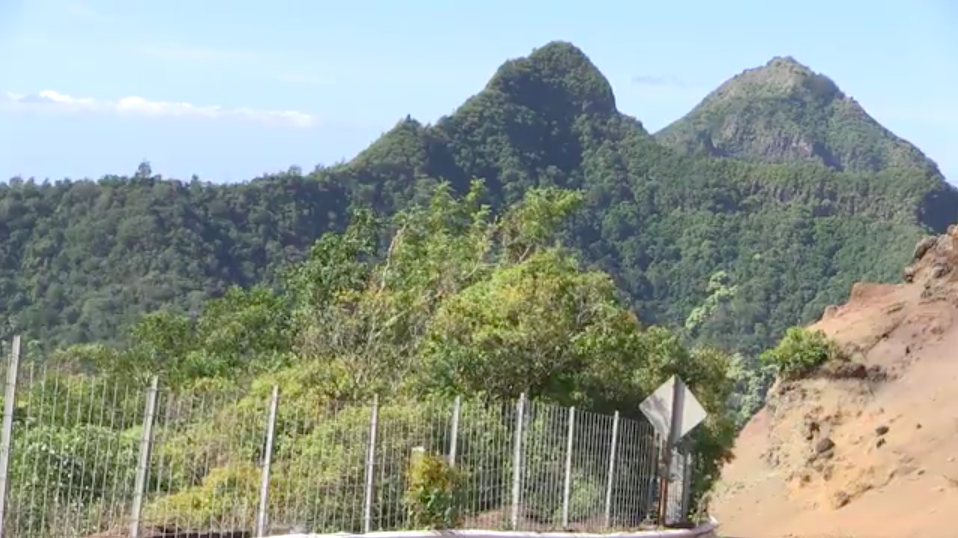08/24/16 – DLNR & YOU – Sustaining Healthy Forested Watersheds For Hawaii’s Communities
Posted on Aug 24, 2016 in Forestry & Wildlife, News Releases, sliderDEPARTMENT OF LAND AND NATURAL RESOURCES
News Release
| DAVID Y. IGE GOVERNOR |
SUZANNE D. CASE
CHAIRPERSON |
For Immediate News Release August 24, 2016
 (click on image to watch video)
(click on image to watch video)
DLNR & YOU – SUSTAINING HEALTHY FORESTED WATERSHEDS FOR HAWAII’S COMMUNITIES
Landscape approach maximizes available resources
HONOLULU — As global climate change progresses, what will happen to Hawai‘i’s aquifers and the ecosystem services which healthy forest watersheds provide? Will we be able to meet our future fresh water needs for drinking and agriculture?
A report just issued by the Hawai‘i Environmental Funders Group, “He Lono Moku: The State of the Environment,” says “Hawai‘i consumes water at almost double the national average, with residents and non-agricultural businesses using an average 144 gallons of water per day, or 4,320 gallons per month, due in part to the impact of 7 million tourists a year.” The report was issued in advance of the International Union for Conservation of Nature World Conservation Congress meeting in Honolulu, Sept. 1-10, and highlights the need to protect and more efficiently use our fresh water supply.
The Department of Land and Natural Resources (DLNR) Division of Forestry and Wildlife (DOFAW) manages a little more than one million acres of public land. Approximately 900,000 acres fall within a Watershed Partnership boundary.
One way that DOFAW seeks to protect priority watersheds is by supporting Watershed Partnerships. These are voluntary alliances between public and private landowners who recognize that cooperating across landscapes and landowner boundaries is the most cost-effective way to maximize watershed protection. Watershed Partnerships play an important role in protecting and preventing the loss of more native forest by: combating the main threats of ungulates (hooved animals such as goats, deer, sheep, pigs, cattle); controlling invasive species; and outplanting native forest species.
“Thank you to Watershed Partnerships for working with the state to plan and carry out our effort to engage local communities and boost the health of forest watersheds. There is renewed hope and measurable success in achieving resilient, healthy forest ecosystems for future generations,” said Gov. David Ige.
These management actions also benefit our coastal and coral reef areas by reducing erosion and sedimentation effects in streams and during heavy rains.
Watershed Partnerships help secure grant funding and in-kind services matching state dollars to achieve broad scale conservation goals. DLNR is currently going through its annual process of awarding $2.5 million in state funding to Watershed Partnerships and other groups engaged in watershed protection and management.
To formally recognize the state’s dedication to watershed protection, the Hawai‘i Association of Watershed Partnerships* (HAWP) was established in 2003 to build public and private support for watershed protection. Division of Forestry and Wildlife Watershed Partnerships planner Katie Ersbak says, “Over the last 25 years they’ve grown to encompass 10 active partnerships across the state, covering about 2.2 million acres; roughly half the land in the entire state. These are areas that are the most critical for water recharge. They also have the highest percentage of biodiversity, unique flora and fauna, and rare and endangered plants.”
The Watershed Partnerships involve over 74 public and private landowners and partners. The benefits of collaborative management practiced under Watershed Partnerships are many:
- Cooperative management actions address large landscapes and threats affecting multiple habitats and species;
- Leverage available funding for maximum benefits and allow the pooling of resources as well as expertise to reduce redundancy efforts;
- Allow operational infrastructure to fill gaps and work on both public and private land
- Develop long-term relationships with communities and hire locally to help train the next generation of conservation leaders.
# # #
Media Contact:
Dan Dennison
Senior Communications Manager
(808) 587-0407
